The Euclid Telescope’s Successful First Test Shows Its Awesome Potential
![]()
Nearly a month after launching from Cape Canaveral, the European Space Agency’s new space probe, Euclid, has sent its first test images to Earth, and they are spectacular.
“They already show excellent image quality,” says the Max Planck Institute for Astronomy (MPIA) of Euclid’s initial test shots. Equipped with two cameras, the VIS camera for high-resolution images in visible light and the NISP camera designed to measure infrared light, the Euclid consortium aims to learn about how dark matter and dark energy influence the structure of the cosmos and understand more about the earliest objects in the universe.
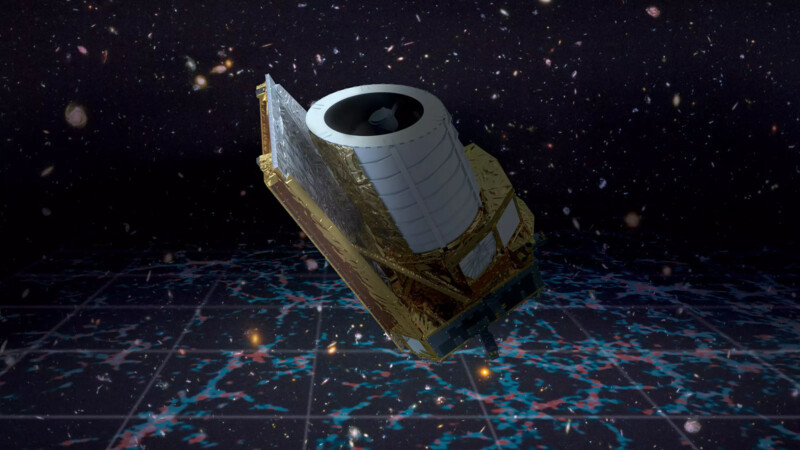
“Although these first test images are not yet usable for scientific purposes, I am pleased that the telescope and the two instruments are now working superbly in space,” says Knud Jahnke from MPIA in Germany. Jahnke is one of the two instrument scientists working with the NISP instrument.
Euclid’s imagers are astounding. The VIS instrument comprises 36 CCD image sensors that capture 609 megapixels of image data, just under 17 megapixels per sensor. VIS will be able to see billions of images in visible light.
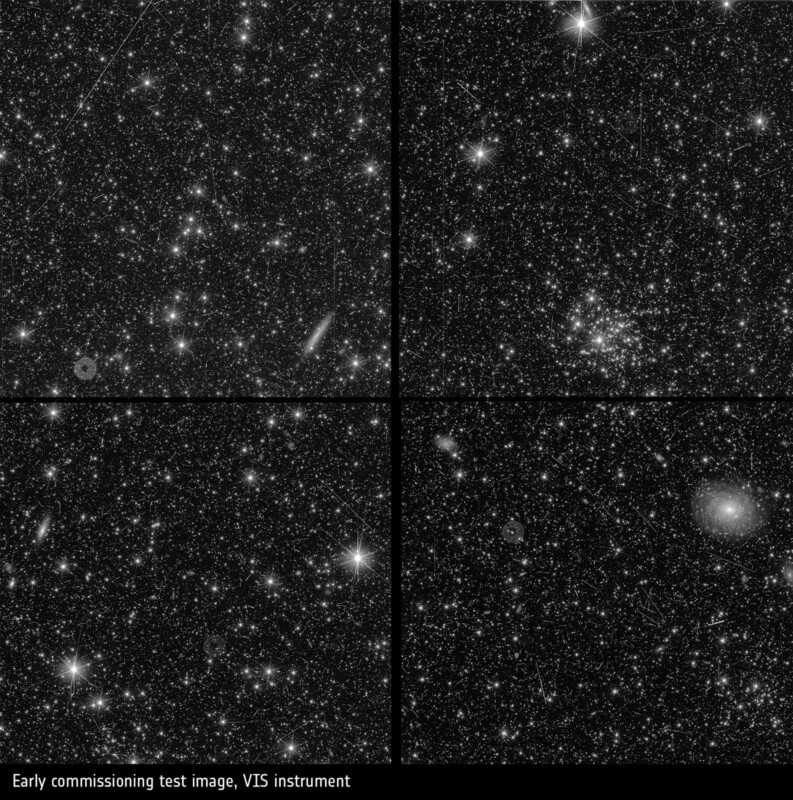
NISP has 16 chips with a total of 64 megapixels. While much lower than 609 megapixels, NISP has plenty of sophistication. It operates in near-infrared wavelengths between one and two microns and also serves as a spectrograph, meaning that it splits the light of objects it detects into sections, allowing scientists to closely analyze the light coming from celestial objects. This data will enable researchers to map the universe’s galaxies across three dimensions.
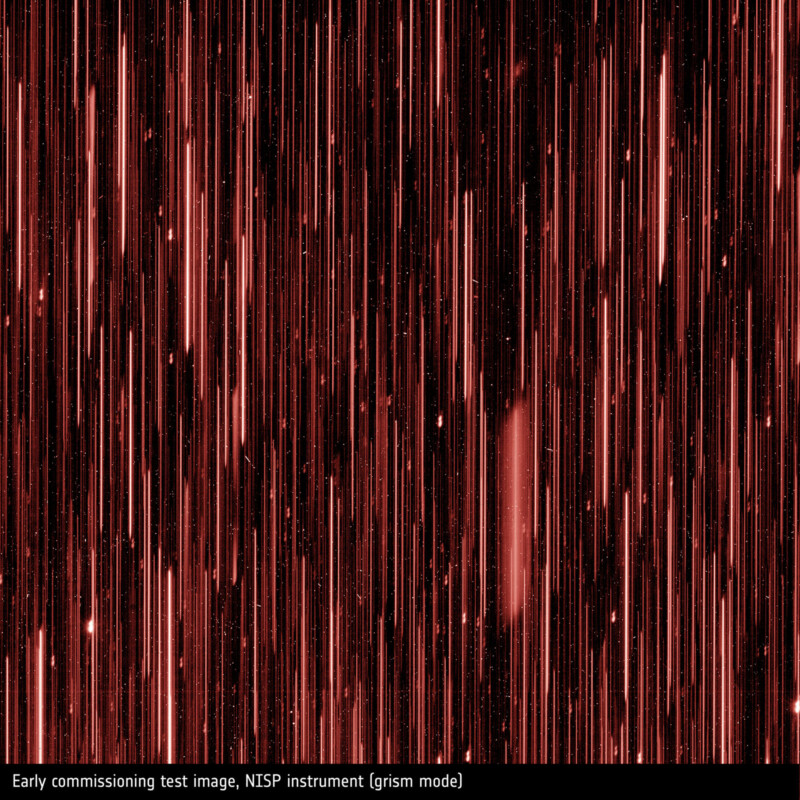
Euclid’s imaging plane is the biggest in scientific history. “After just a few days, Euclid will have sent more scientific image information to Earth than the Hubble Space Telescope did in its 33 years of work,” writes MPIA.
Paired with the massive sensor arrays are some large lenses. The four lenses of the NISP instrument weigh up to 2.5 kilograms (5.5 pounds), and form the largest objective ever sent to space. The lenses are accurate to 1/10 the diameter of a human hair, making them “the best-adjusted” of all space missions.
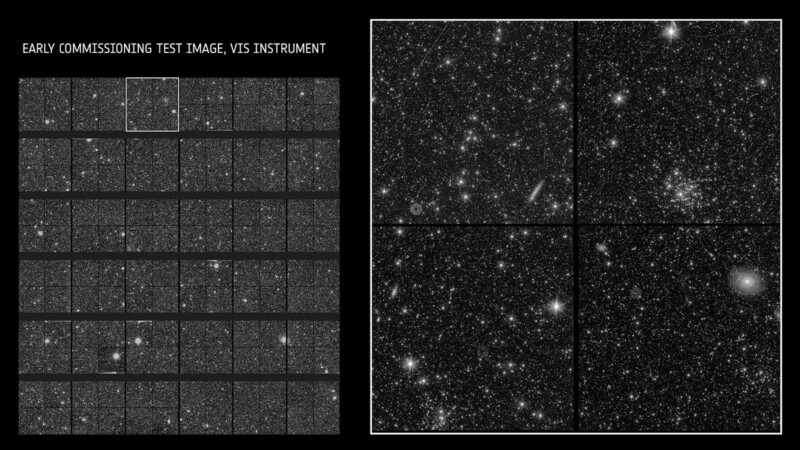
“When I felt the rumble of the engines in my stomach and chest during the launch of the Falcon 9 rocket with Euclid on board at a distance of almost nine kilometers from the launch site, I had to think about ‘my’ lenses, which were exposed to far greater vibrations only a good 60 meters away from the engines. Although we tested everything well and with sufficient safety, I was happy to see on the first pictures that our optics are intact and will work excellently according to expectations,” says a relieved Frank Grupp of the Max Planck Institute for Extraterrestrial Physics (MPE) and Ludwig Maximilian University. Grupp is the optical architecture of the instrument’s main optical components.
“After 16 years of work for Euclid, we can be proud that the telescope is now opening its eyes and looking into space, thanks in part to our efforts,” Grupp adds.
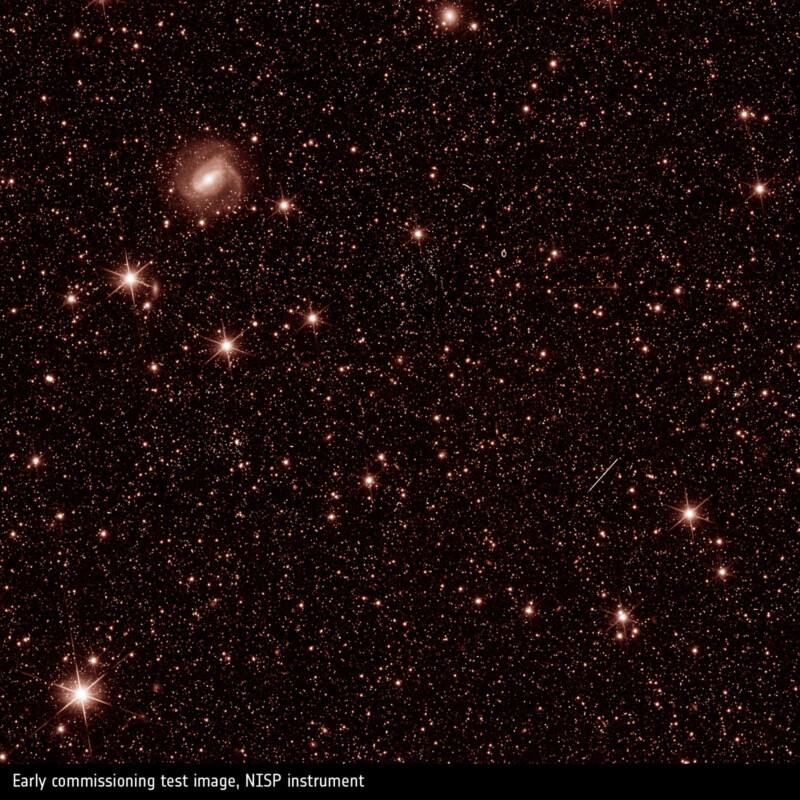
“After more than 11 years of designing and developing Euclid, it’s exhilarating and enormously emotional to see these first images,” says Euclid project manager Giuseppe Racca. “It’s even more incredible when we think that we see just a few galaxies here, produced with minimum system tuning. The fully calibrated Euclid will ultimately observe billions of galaxies to create the biggest ever 3D map of the sky.”
The next step is for Euclid’s engineering and science teams to adapt settings developed ahead of Euclid’s launch and calibrate the probe’s instruments.
“We are very pleased that the commissioning phase of Euclid is progressing well,” says Alessandra Roy, Euclid project manager at the German Space Agency at the German Aerospace Center (DLR). “The spacecraft will soon reach its final position at a distance of 1.5 million kilometers from Earth and begin scientific observations. Then Euclid will shed light on the dark side of the universe.”
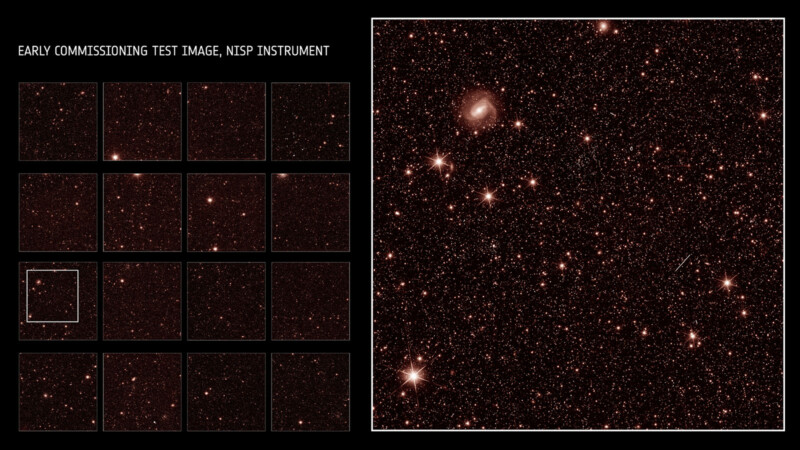
The dark matter and dark energy that Euclid will study comprise 95 percent of the cosmos. However, they are “largely unknown and invisible components” of the universe. “While dark matter determines the gravitational effects between and within galaxies and initially caused the universe’s expansion to slow down, dark energy is responsible for the current accelerated expansion of the universe,” explains MPIA.
During Euclid’s planned six-year mission, it will survey around 36 percent of the sky.
Image credits: ESA/Euclid/Euclid Consortium/NASA, CC BY-SA 3.0 IGO